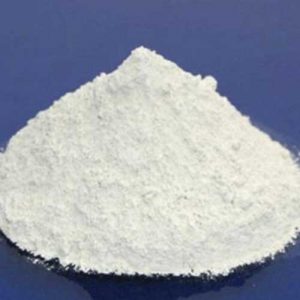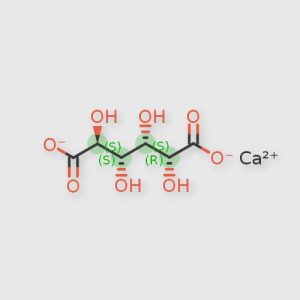- Have any questions?
- 91-22-23726950
- 91-22-23774610

Potassium Carbonate
May 7, 2019
Potassium Hydroxide Pellets
May 7, 2019Potassium Chloride
Muby Chemicals established in the year 1976, is pioneer in Manufacturing Chemicals for Oil and Gas Exploration, Hydraulic Fracturing (Fracking) and coiled tube Chemicals.Our advanced chemistry leading to an innovative and high-performance product range is coupled with effective on and off site management services.
We are manufacturer of Specialty chemicals, Pharmaceutical Excipients, Fragrance & Flavorchemicals in India, which are of IP, BP, USP, Ph. Eur., FCC or Food Grade, ACS, AR or Analytical Reagent Grade, LR or Laboratory Reagent Grade, Pure and Technical Grades of various chemicals.
Potassium Chloride USP Specifications
Potassium Chloride USP
KCl 74.55
Assay— Potassium Chloride contains not less than 99.0 percent and not more than 100.5 percent of KCl, calculated on the dried basis.
Packaging and storage— Preserve in well-closed containers.
Labeling— Where intended for use in hem dialysis, it is so labeled.
Identification— A solution (1 in 20) responds to the tests for Potassium and for Chloride.
Acidity or alkalinity— To a solution of 5.0 g in 50 mL of carbon dioxide–free water add 3 drops of phenolphthalein TS: no pink color is produced. Then add 0.30 mL of 0.020 N sodium hydroxide: a pink color is produced.
Loss on drying — Dry it at 105 for 2 hours: it loses not more than 1.0% of its weight.
Iodide or bromide—
IODIDE—
Standard stock solution— Transfer an accurately weighed quantity, about 41 mg, of potassium iodide to a 25-mL volumetric flask. Dissolve in and dilute with water to volume, and mix.
Standard solution— Dilute 1.0 mL of Standard stock solution with water to 25 mL, and mix. Dilute 2.0 mL of this solution with water to 8 mL, and proceed as directed for Test solution beginning with “Add 1 mL each of chloroform”.
Test solution— Dissolve 2 g in 8 mL of water. Add 1 mL each of chloroform and diluted hydrochloric acid, then add 2 drops of a chloramine T solution (0.1 in 100), and shake gently. The violet color of the chloroform layer is not darker than that of a concomitantly prepared Standard solution: the limit is 0.005%.
BROMIDE—
Standard solution— Transfer an accurately weighed quantity, about 32 mg, of sodium bromide to a 25-mL volumetric flask. Dissolve in and dilute with water to volume, and mix. Dilute 2.0 mL of this solution with water to 8 mL, and proceed as directed for Test solution beginning with “Add 1 mL each of chloroform”.
Test solution— Dissolve 2 g in 8 mL of water. Add 1 mL each of chloroform and diluted hydrochloric acid, then add 5 drops of a chloramine T solution (1 in 100), and shake gently. The brown color of the chloroform layer is not darker than that of a concomitantly prepared Standard solution: the limit is 0.1%.
Aluminum— where it is labeled as intended for use in hem dialysis— Proceed as directed using 2.0 g of Potassium Chloride to prepare the Test Preparation: the limit is 1 µg per g.
Calcium and magnesium— To 20 mL of a solution (1 in 100) add 2 mL each of 6 N ammonium hydroxide, ammonium oxalate TS, and dibasic sodium phosphate TS: no turbidity is produced within 5 minutes.
Sodium— A solution (1 in 20), tested on a platinum wire, does not impart a pronounced yellow color to a non-luminous flame.
Heavy metals— Dissolve 2.0 g in 25 mL of water: the limit is 0.001%.
Organic volatile impurities: meets the requirements.
Potassium Chloride BP Specifications
Potassium Chloride BP
KCl 74.55
DEFINITION
Content
99.0 per cent to 100.5 per cent of KCl (dried substance).
CHARACTERS
Appearance
White or almost white, crystalline powder or colorless crystals.
Solubility
Freely soluble in water, practically insoluble in anhydrous ethanol.
IDENTIFICATION
It gives the reactions of chlorides.
Solution S gives the reactions of potassium.
TESTS
Solution S
Dissolve 10.0 g in carbon dioxide-free water R prepared from distilled water R and dilute to 100 ml with the same solvent.
Appearance of solution: Solution S is clear and colorless.
Acidity or alkalinity: To 50 ml of solution S add 0.1 ml of bromothymol blue solution. Not more than 0.5 ml of 0.01 M hydrochloric acid or 0.01 M sodium hydroxide is required to change the color of the indicator.
Bromides: Maximum 0.1 per cent.
Iodides: Moisten 5 g by the drop wise addition of a freshly prepared mixture of 0.15 ml of sodium nitrite solution, 2 ml of 0.5 M sulphuric acid, 25 ml of iodide-free starch solution and 25 ml of water. After 5 min, examine in daylight. The substance shows no blue color.
Sulphates: Maximum 300 ppm.
Aluminium: Maximum 1.0 ppm, if intended for use in the manufacture of hem dialysis solutions.
Barium: To 5 ml of solution S add 5 ml of distilled water and 1 ml of dilute sulphuric acid. After 15 min, any opalescence in the solution is not more intense than that in a mixture of 5 ml of solution S and 6 ml of distilled water.
Iron: Maximum 20 ppm.
Magnesium and alkaline-earth metals: Maximum 200 ppm, calculated as Ca.
Sodium: Maximum 0.10 per cent, if intended for use in the manufacture of parenteral preparations or hem dialysis solutions.
Heavy metals: Maximum 10 ppm.
Loss on drying: Maximum 1.0 per cent, determined on 1.000 g by drying in an oven at 105 C for 3h.
Potassium Chloride FCC Food Grade US Food Chemical Codex
Potassium Chloride
KCl 74.55
Formula wt 74.55
DESCRIPTION: Potassium Chloride occurs as colorless, elongated, prismatic, or cubical crystals, or as a white, granular powder. It is stable in air. Its solutions are neutral to litmus. It may contain up to 1.0% (total) of suitable food-grade ant-caking, free-flowing, or conditioning agents such as calcium stearate or silicon dioxide, either singly or in combination. One gram dissolves in 2.8 mL of water at 25°, and in about 2 mL of boiling water. Potassium Chloride containing anti-caking, free-flowing, or conditioning agents may produce cloudy solutions or dissolve incompletely. It is insoluble in alcohol.
Function: Nutrient; gelling agent; salt substitute; yeast food.
REQUIREMENTS:
Identification: A 1:20 aqueous solution gives positive tests for Potassium and for Chloride.
Assay: Not less than 99.0% of KCl after drying; and not less than 98.0% of KCl after drying when a sample contains added substance.
Acidity or Alkalinity: A sample containing no added substance passes test.
Heavy Metals (as Pb): Not more than 5 mg/kg.
Iodide and/or Bromide: Passes test.
Loss on Drying: Not more than 1.0%.
Sodium: Passes test.
Potassium Chloride ACS Analytical Reagent Specifications
American Chemical Society Reagent Grade
Potassium Chloride KCl
Formula Wt 74.55
CAS Number 7447-40-7
REQUIREMENTS
Assay: ———————- 99.0-100.5% KCl
pH of a 5% solution ——— 5.4-8.6 at 25C
MAXIMUM ALLOWABLE
Insoluble matter ———— 0.005%
Iodide (I) —————— 0.002%
Bromide (Br) —————- 0.01%
Chlorate and nitrate (as NO3) 0.003%
Nitrogen compounds (as N) — 0.001%
Phosphate (PO4) ————- 5 ppm
Sulfate (SO4) ————— 0.001%
Barium (Ba) —————– Passes test
Heavy metals (as Pb) ——– 5 ppm
Iron (Fe) ——————- 3 ppm
Calcium (Ca) —————- 0.002%
Magnesium (Mg) ————– 0.001%
Sodium (Na) —————– 0.005%




